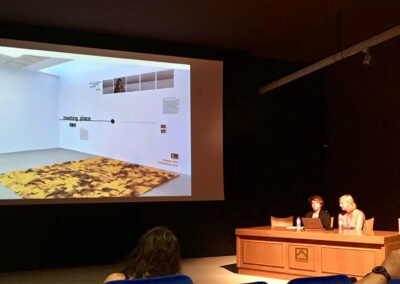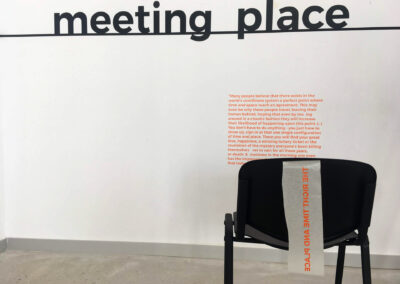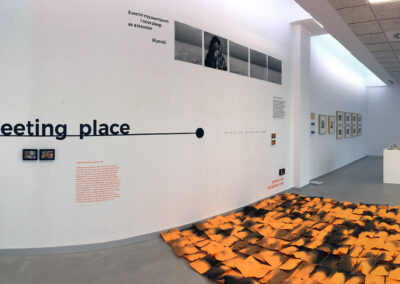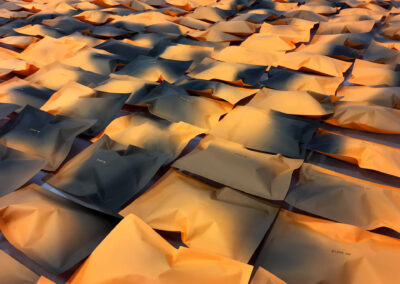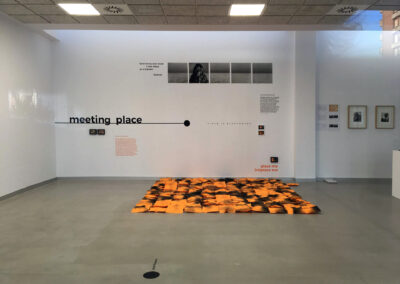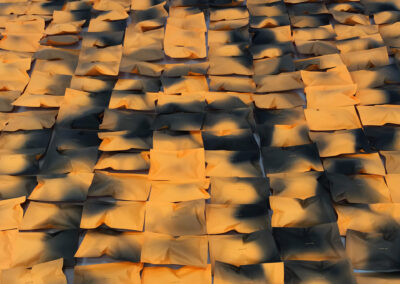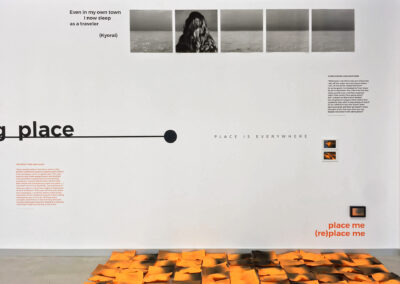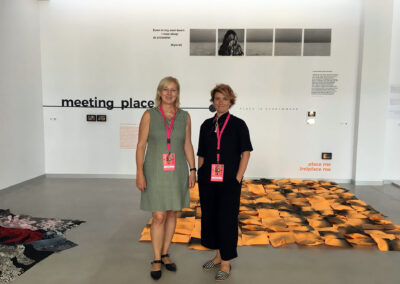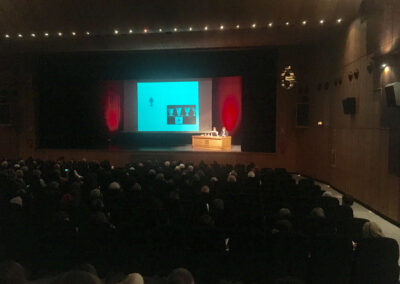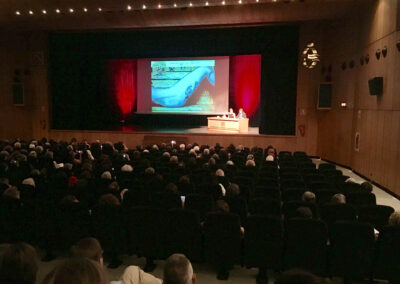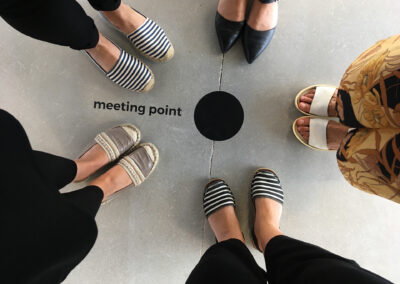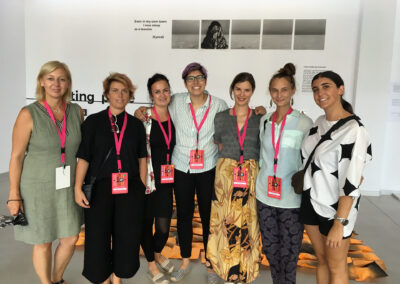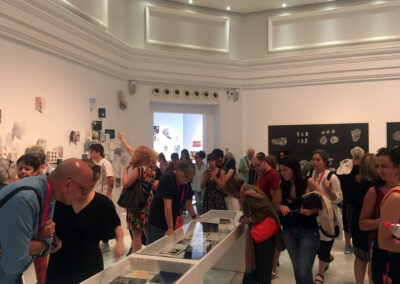Projekt Meeting Place dr hab. Magdaleny Hlawacz w ramach międzynarodowej konferencji IMPACT 10 w Hiszpanii
Dr hab. Magdalena Hlawacz wzięła udział w wystawie i konferencji International Multidisciplinary Printmaking Conference IMPACT 10 w Santander w Hiszpanii. IMPACT to prestiżowa konferencja graficzna z 20-letnią tradycją, która gościła w m.in. w: Wielkiej Brytanii, Finlandii, RPA, Polsce, Niemczech, Estonii, Australii, Chinach, Hiszpanii i Hongkongu.
Magdalena Hlawacz zaprezentowała projekt Meeting Place (instalacja, obiekty, grafik, fotografia) wspólnie z prof. Aleksandrą Janik z ASP we Wrocławiu na wystawie głównej IMPACT 10, poruszający temat topofilii i emocjonalnej więzi z miejscem. Projekt został wyłoniony w procedurze konkursowej przez międzynarodowe jury.
Ponadto wzięła udział w panelu dyskusyjnym Place, Memory and the Imaginary (Patricia Villalobos Echeverría, Aleksandra Janik, Magdalena Hlawacz, Nayda Collazo-Llorens, Sang-Mi Yoo).
informacje o projekcie https://www.impact10.es/ensayos-papers/panel-b/
ES / Lugar de encuentro
La presentación se enfocará en el proyecto colaborativo “Lugar de Encuentro”. Lugares, personas, objetos, historias, encuentros – un viaje – estas son nuestras conjunto fundamental de técnicas artísticas. Nuestros trabajos, con mayor frecuencia, se crean en movimiento, en el camino, en los arreglos cambiando dinámicamente y personales. Para nosotros, la creación es una parte natural de experimentar la realidad y vivirla a través de ella.
Nuestras expediciones y viajes comunes a los límites geográficos y mentales del mundo sirven como un ejercicio y un portal a este estado, esta condición que agudiza los sentidos y estimula nuestra imaginación creativa. Un viaje es una transición, y ciertamente una transformación de la forma de percibir y comprender las cosas. Además de un encuentro.
Los encuentros están mediados. Nuestras identidades se encuentran en una esfera simbólica de comunicación. Siempre hay dos aspectos de eso. Una revela la esencia de lo que somos, donde la audiencia nos desnuda en una vigilancia como la mirada o la indagación. El otro es la creación: cómo nos (re)presentamos a los demás. Los lugares se pueden percibir a través de las personas con las que uno se encuentra o al revés, las personas que se encuentran pueden ser percibidas a través de los lugares donde sucedió.
La idea de la exposición se concentra en la forma en que abordamos el lugar, el desplazamiento o el espacio social en el contexto de los encuentros. También es para enfrentar las historias detrás de ellos.
Nos alientan a dar un nuevo vistazo a un lugar, a fin de comprenderlo, a sentir su carácter específico.
Aprendemos cuál es el lugar y nuestro conocimiento tiene al instante un signo de interrogación. Un lugar determinado sufre transformaciones constantes tanto en el tiempo como en nuestra mente. Su ser es un proceso.
ENG / Meeting Place
The presentation would focus on this collaborative artwork titled “Meeting Place.” Places, people, objects, stories, meetings – a journey – this is our fundamental set of artistic techniques.
Our works are most often created in motion, on the way, in dynamically changing spatial and personal arrangements.
For us, creation is a natural part of experiencing reality and living it through.
Our common expeditions and voyages to the geographical and mental limits of the world serve as an exercise and a portal to this state, this condition which sharpens the senses and stimulates our creative imaginations.
A journey is a transition, and certainly a transformation of the way of perceiving and comprehending things. As well as an encounter.
Encounters are mediated. Our identities meet in a symbolic sphere of communication.
There are always two aspects of that. One is revealing the essence of who we are, where the audience strips us down in a surveillance like gaze or inquiry.
The other one is creation – how we (re)present ourselves to others. The places can be perceived through the people one met there or the other way around, the people one meets can be perceived through places where it happened.
The idea of the exhibition focus on the way how we engage place, displacement, or the social space in the context of encounters. It is also to face the stories behind them.
They encourage us taking a new look at a place, in order to understand it, to feel its specific character. We learn what the place is and our knowledge instantly bears a question mark. A given place undergoes constant transformations in time as well as in our mind. It’s being is a process.
Magdalena Hlawacz, Aleksandra Janik

